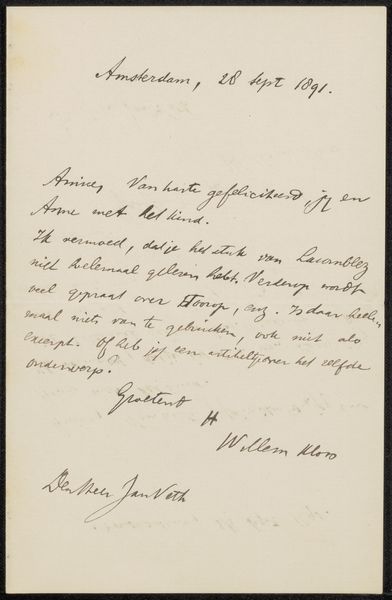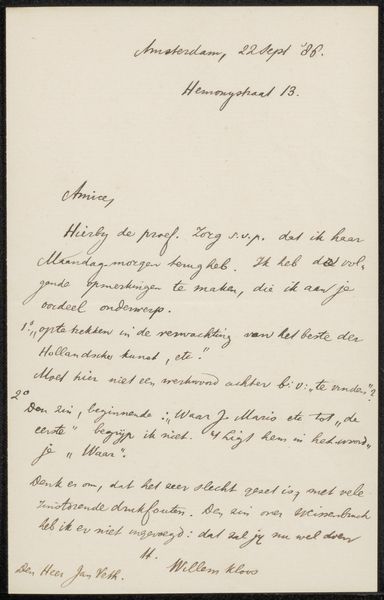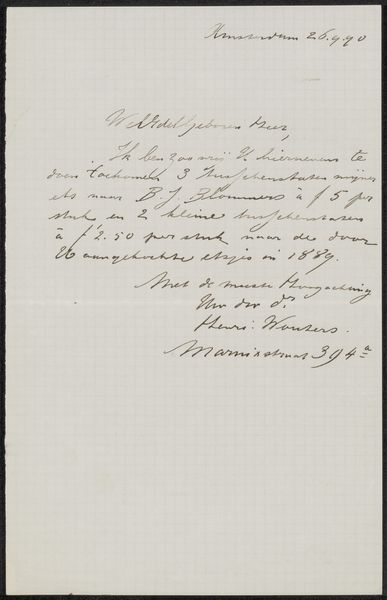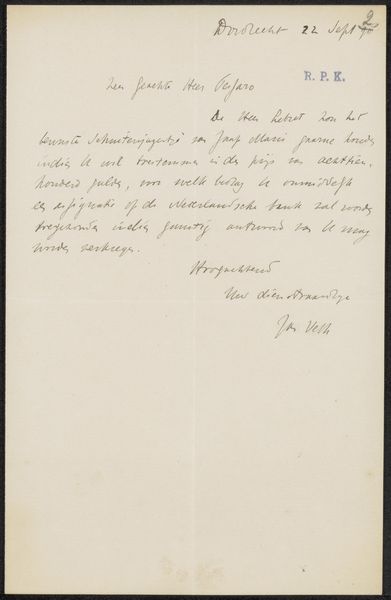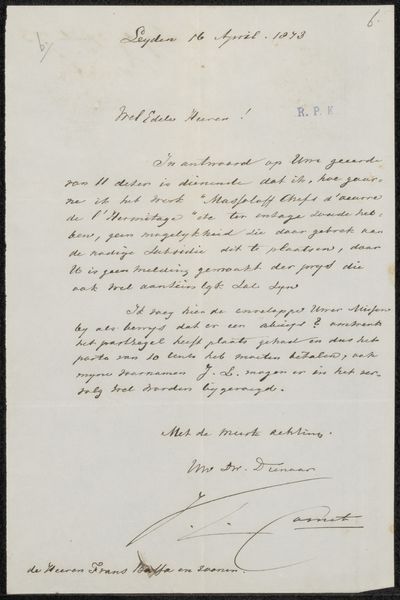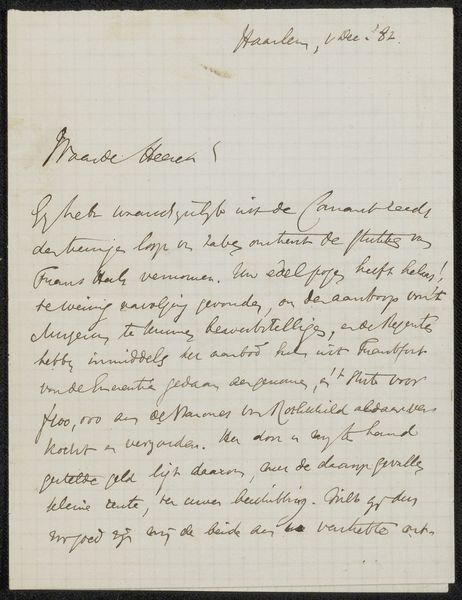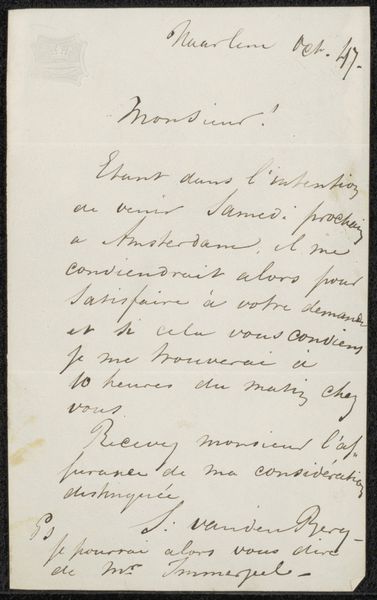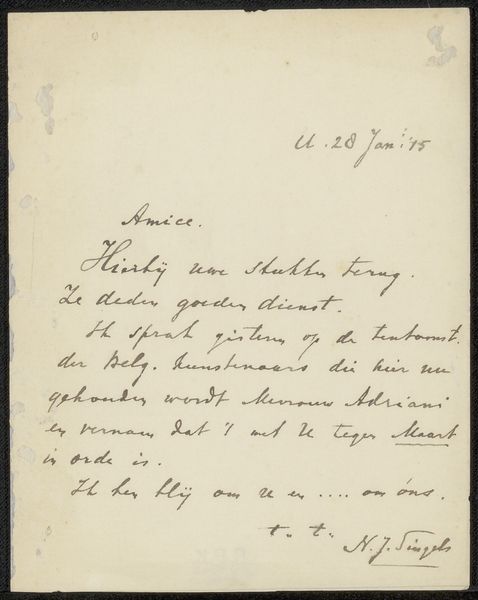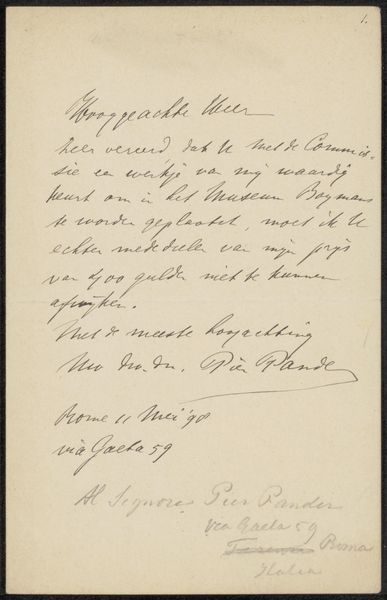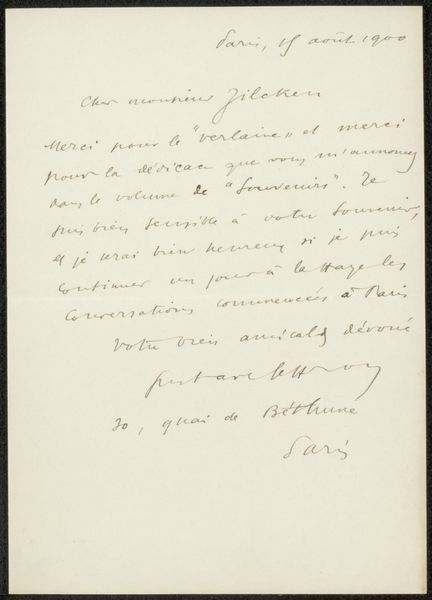
drawing, paper, ink
#
portrait
#
drawing
#
ink drawing
#
paper
#
ink
#
calligraphy
Copyright: Rijks Museum: Open Domain
Curator: I’m immediately struck by the intimacy of this letter. The slant of the handwriting, the way the ink bleeds slightly into the paper...it feels incredibly personal. Editor: It is a really direct, unadorned message. This is Willem Kloos’s "Brief aan Jan Veth", thought to have been written around 1886. We believe it's ink on paper. It offers us a unique window into the late 19th-century Dutch art scene. Curator: The term 'drawing' here almost feels inadequate. It’s so much more. The very act of writing becomes an artistic expression itself. I mean, look at the variations in pressure, the almost performative flourish of the signature. Editor: Agreed. And considering the probable cheapness of materials like ink and paper—the material constraints really spotlight Kloos' craft and, more importantly, what he has to say. Here he’s talking about sending Veth a brochure, mentioning Karel van Mander, L. Pletinck and referencing some exhibition they had discussed previously. It's functional, connecting to a tangible network of artists and collaborators. Curator: And that's precisely where the socio-historical context explodes, doesn't it? Beyond being a personal message, this encapsulates an intersection of aesthetic vision, creative practice, and community bonds within that period. We might interpret this letter, its calligraphic quality, its reference to exhibitions as being indicative of power dynamics amongst writers. How does the tone create a context for access? Editor: That said, I'd like to see if paper analysis or ink pigment details provide new social context. Who was supplying paper? Ink? Did political events disrupt this economy in a way that subtly marks Kloos' means of artistic expression? I'm also wondering what were the financial circumstances under which it was created, for both sender and recipient? Curator: Exactly! This really underscores the richness and potential of what we might at first glance, dismiss as simply "a letter.” By connecting the seemingly mundane— the materiality of its components and its historical moment —to its social and political relevance we can gain new and fresh understandings about not only the piece but of the world during that period. Editor: A simple letter revealing a far more complex and intertwined story when viewed through different lenses.
Comments
No comments
Be the first to comment and join the conversation on the ultimate creative platform.
